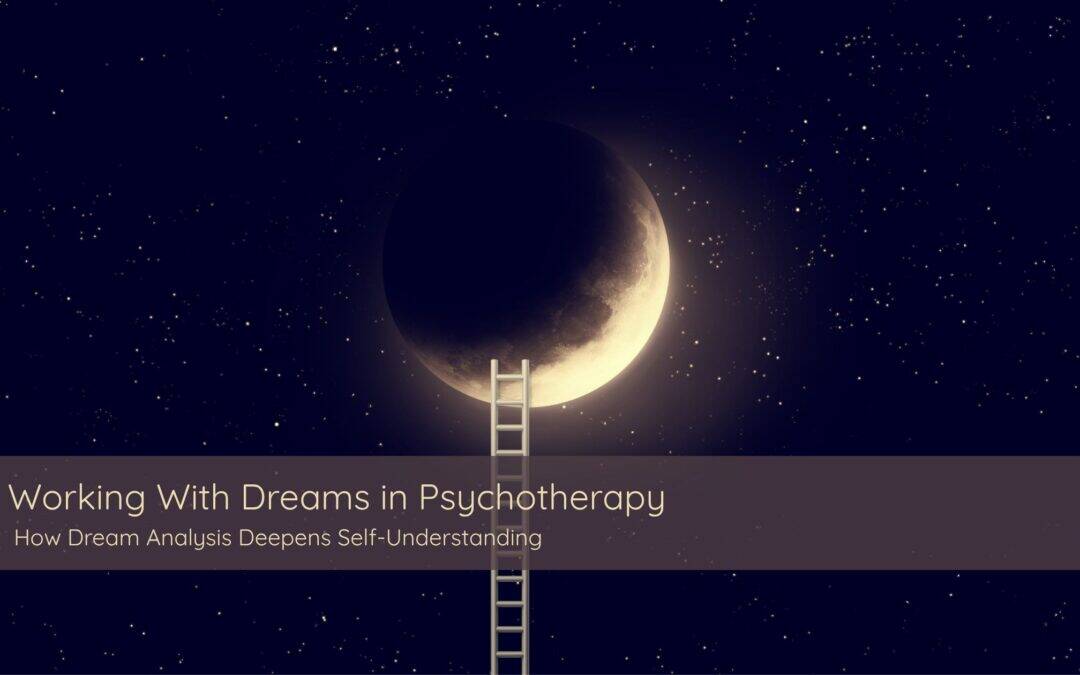I remember the first time I witnessed a skilled dream analysis. The impact of watching a master at work sent shivers of inspiration through me.
My professor leaned back in his chair and said, “I’m going to close my eyes for the entirety of this. It helps me enter the dream. Now, tell me the dream—slowly, as if you are there now.”
For the next hour, my classmate was guided through the contours of her dreamscape. By the end, she was in tears. I sat wide-eyed, goosebumps running down my arms.
I was fortunate to take two classes with this professor before he retired, but from that first moment, I knew I wanted to study with him as my mentor so I could incorporate dream analysis in therapy.
Earning a Mentor in Dream Work
“Tangaryo” refers to the practice in Japan where those wishing to study Zen must sit outside monastery gates—sometimes for days—demonstrating their resolve before being allowed in. During Tangaryo, the would-be students knock again and again, often being turned away.
That was my experience, albeit through email, for two years. By year three, my professor must have realized I wouldn’t give up, and he finally agreed. I had the honor of studying dream analysis with him for two more years.
What I Learned About Dream Work
Dream Analysis Is Liquid
 Water takes the shape of whatever it enters. In something fully saturated, no point is left unconnected from another.
Water takes the shape of whatever it enters. In something fully saturated, no point is left unconnected from another.
This is the nature of a dream.
No image or feeling is irrelevant; everything connects back to the dreamer—their life, emotions, and inner world.
Dream analysis follows the flow of these connections to uncover something previously unknown.
In sessions with clients, I’ve seen countless moments of surprise and insight emerge when we immerse ourselves in the imagery and associations of a dream.
Dreams as a Bridge Between Worlds
In Jungian psychology, personal growth—or individuation—depends on the conscious mind’s ability to listen to the unconscious. Jung viewed the unconscious as the seat of the soul, communicating most clearly through dreams.
Dreams are the soul’s language, bridging our conscious awareness with the deeper intelligence of the psyche. Through dream analysis, we learn to walk this bridge and begin to speak that language.
Learning the Language of Dreams
Dreams speak in metaphor, symbol, feeling, image, and impact.
After five years of studying dream work, learning to understand this language remains both the greatest challenge and the greatest reward.
Some say dreams reveal what we are unaware of.
Some say they help us process the events of the day.
Some say they hold layered meaning—commenting on our personal, inner, and collective experience.
And some say they are random, meaningless fragments.
The truth? It’s hard to know.
 Decoding the Dream: A Metaphor from Film
Decoding the Dream: A Metaphor from Film
A helpful analogy comes from the 2016 sci-fi film Arrival.
In it, an alien species comes to Earth with an important message—but their language is circular and palindromic, almost impossible to decipher.
As humanity works to understand the message, our perception of time and reality begins to shift.
This is the essence of dream analysis: not finding a single translation, but allowing the process of understanding to change us.
The Transformative Power of Dream Work
Jung believed the intelligence within dreams is as deep as humanity’s collective experience. To think we can fully decode it is an error—yet it remains a language worth learning.
The struggle to understand dreams creates transformation. Dream analysis invites the dream to work on us.
At its core, psychological health requires us to tolerate and even embrace the unknown. If we believe we already know, we cannot learn from what we don’t.
Dream work opens us to that unknown. The effort to understand the seemingly indecipherable helps us engage with mystery—in ourselves, our relationships, and our lives.
Final Thoughts: The Healing Power of Engaging the Unknown
Working with dreams is not just an interpretive practice—it’s a form of deep listening. Each dream invites us to enter a dialogue with parts of ourselves that might otherwise remain hidden.
At The Catalyst Center, we honor the wisdom of the unconscious as part of a holistic, trauma-specialist approach to therapy. Through dream work and other integrative modalities, our goal is to help clients access meaning, restore balance, and discover the healing potential that lies within the unknown.
Interested in exploring Dreams?
Contact The Catalyst Center to book a consultation with Cory.
Call to schedule a free introductory call or contact us.

